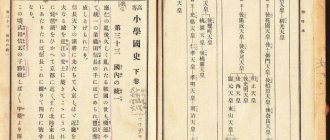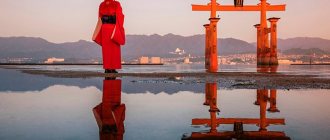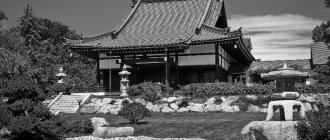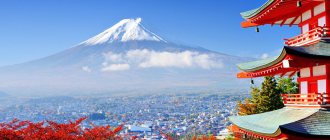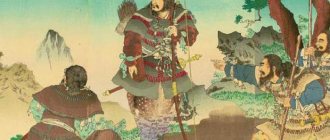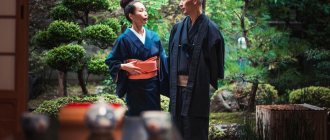It is known that Japan is one of the leading countries in the world in the field of science and technology, international politics and trade. But, despite the economic miracle that occurred in this state after the Second World War, its people have still retained their unique identity. It is this that significantly distinguishes the Japanese from the rest of the world. Yes, their culture borrowed a lot from other peoples. But they successfully managed to adapt all the innovations to their traditions. However, the original religion of the Japanese still remains the unchanged cultural basis of the Land of the Rising Sun.
Folk beliefs
Despite the high development of information technology, Japanese culture still remains a mystery for residents of Western countries. This is especially true for ancient beliefs. If you ask what religion the Japanese profess, many will answer Buddhism. But this statement is not entirely correct, since this creed penetrated the islands from China only in the 6th century. It was then that the first Buddhist monks began to come to these lands. They brought with them sacred books written in their native language. The following question arises: what religion did the Japanese have before the advent of Buddhism?
Scientists have proven that initially each nation had its own beliefs, which implied a certain religious practice that was in no way connected with the church hierarchy. It was a whole series of actions and ideas that were based on superstitions, prejudices, etc.
Shintoism in Japan
The Japanese Shinto religion states that a deity can be summoned near a sacred place by clapping the hands twice. Blood sacrifices were not practiced in Japan; each ritual was aimed at developing friendly relations with nature and the outside world.
The teachings of Shintoism are based on:
- Faith in the spirituality of nature. The Japanese believe that there is life in every object and subject of nature, be it a stone or a plant.
- Every object has a soul - kami.
- Stones are the patrons of clans and families. In general, stones among the Japanese personify not only clan and family, but also eternity (the indigenous population of Japan believes that after death a person’s soul is encased in a stone in order to protect his clan).
- The main spiritual principle of life is unity with nature and people. The material world is considered the only place where people and nature can interact.
- In Shinto there is no division between good and evil, as can be seen in other religions. For example, the confrontation between a tiger and its prey is a natural process for the Japanese, for this reason they do not brand the tiger “evil” for its desire to eat.
The traditional beliefs of the Japanese originate from 4-3 thousand BC, when the first Mongol tribes came to the territory of modern Japan. Primitive beliefs based on totemism, animism and magic remained mothballed until the 7th century, when they were incorporated into the philosophical movement - Shintoism. Simultaneously with the formation of the state religion Shinto, another teaching came to Japan - Buddhism.
Ancient cults
Japan has long worshiped various living beings. One of the most widespread was the cult of the fox. Special temples were dedicated to the deity in the form of this animal with a human body and mind, which have survived to this day. People with the so-called fox nature still gather there. Falling into a trance to the sounds of drums and the heart-rending howls of priests, they think that a sacred spirit is possessing them, sending them the gift of seers who can predict the future.
In addition to the fox, the Japanese also worship other living creatures, for example, snakes, turtles, dragonflies and even mollusks. Until recently, the wolf was considered the dominant animal. He was called the spirit of the Okami Mountains. Peasants usually asked him to protect their crops and themselves from various troubles and misfortunes, fishermen - to send a fair wind, etc. But no matter what animal the ancient and modern islanders worshiped, these are just beliefs. Let’s try to figure out what the Japanese religion is actually called and what it is in this article.
Christianity
Christianity came to Japan in the middle of the 16th century, along with the Catholic missionaries of Francisco Javier. The famous Japanese military leader and prince Oda Nobunaga supported Christians and himself accepted this faith, as he found in them material support (supplies of firearms) to fight his enemies.
After the Tokugawa clan came to power, they began to fight Christians mercilessly. Christianity was banned until the Meiji Restoration in 1867, when freedom of conscience was declared.
Currently, about one percent of the Japanese population consider themselves Christians. However, such an attribute of Christianity as “wedding” is now becoming more and more popular, since it turns out to be much cheaper than a wedding according to the traditional rite. Many of those participating in Christian rituals are attracted not by the religious, but by the aesthetic side of worship. Therefore, Orthodoxy is unexpectedly very popular in Japan.
Shinto - the way of the gods
According to the general consensus of scientists, the ancient religion on the islands of Japan developed separately from the Chinese, and reliable sources of its origin have not yet been found. It is called Shinto, or the way of the gods. To tell the truth, for most Japanese the origin and essence of this religion is not so important; for them it is at the same time a tradition, history and life itself.
Shinto can be compared to ancient mythology, and the meaning and purpose of Shinto itself is to affirm the originality of Japanese culture and the divine origin of its people. According to this religion, first there appeared the emperor (mikado), who is a descendant of heavenly spirits, and then each of the Japanese - his offspring (kami). In this case, the object of worship is considered to be the ancestors, or more precisely, the souls of deceased patrons of families.
Japanese religions - general features
According to the latest sociological survey, in 2010, more than 100 million Japanese considered themselves Shintoists, 85 million were Buddhists, and 1.9 million people declared adherence to Christianity. At the same time, the total population of Japan at that time was 128 million people. A situation in which the number of believers exceeds the population of a country is unthinkable for Western cultures and completely natural for Japan . Even as a Christian, the Japanese do not deny themselves the pleasure of participating in Shinto festivals or asking Tenjin, the patron deity of education and scientists, for help in passing exams.
Despite significant ritual and doctrinal differences, Shinto and Japanese Buddhism share several common features. These include: polytheism, the absence of a canonical text, a developed cult of ancestors, the presence of local cults, the close connection of rituals with the agricultural cycle, the absence of a dominant school, and an orientation toward gaining “profit in this world” (genze riyaku). Of course, there are many more differences between Shinto and Buddhism. Thus, already in the Middle Ages, a certain division of ritual duties developed between Buddhist monks and Shinto priests, which remains in general terms to the present day. The birth of a child is accompanied by the performance of Shinto rites, while the funeral is carried out by Buddhist monks.
Written sources
The main religious documents of Shintoism are two collections of myths - Nihongi and Kojiki, written by the emperor's courtiers after 712, as well as detailed instructions with ancient prayers and rituals - Engishiki. Historians believe that since these written sources appeared much later than the events in question, the original spiritual practices and beliefs of Shintoism may be somewhat distorted. But, be that as it may, it is clear from them that the ancient Japanese, whose religion and traditions were centered mainly around their family and clan, as well as agricultural holidays, idolized life.
Shamans, who performed the duties of cult ministers and spoke with believers on behalf of their ancestors (kami), were considered warriors who fought against evil spirits. They invoked the gods using Kagura - sacred dances traditional for this religion, performed by young girls. It is safe to say that much of traditional Japanese art, music and literature has its roots in the ancient shamanic rituals of Shintoism.
Confucianism as a “semblance of religion”
As stated above, a feature of the Japanese attitude towards religion is considered to be “non-religiousness” or Japanese beliefs are interpreted as “natural religion”. Another aspect in which Japanese religiosity can be viewed is the familiarity for the Japanese, who do not really perceive “religion” in the narrow sense of the word, of such systems that are a kind of “semblance of religion.”
Take Confucianism for example. The Japanese highly value politeness. They bow in front of everyone, and it seems that Confucian influence was strongly manifested in this. In addition, the Japanese use a special language style - polite speech. Starting from middle school, the style of speech used in relation to other students older and younger than oneself differs more and more, and this is superimposed on the system of honoring elders and caring for younger ones. The veneration of ancestors is also a feature of Confucianism. We said above that the funeral ceremony and visiting graves belong to the sphere of Buddhist rituals, but they also bear a Confucian imprint. Whether Confucianism is called a religion or not depends on the definition of the term “religion,” but reverence for the “will of Heaven,” respect for the sequence of transmission of life from ancestors to descendants, recognition of the importance of social order, sanctified by etiquette, can all be considered as religious manifestations. In addition, it can be said that in East Asia, the European word “religion” most closely corresponded to the word “path,” and to the Japanese of the 17th and 18th centuries, both Buddhism and Confucianism indicated the “path.”
Basic Religious Concepts
The view of the world that the Japanese believers were able to form is very interesting. The Shinto religion is based on five main concepts, and the first of them is: the world was not created by God - it arose on its own, and it is not just good, but perfect.
The second concept celebrates the power of life. According to Japanese mythology, the first sex occurred between deities. That is why morality and physical intimacy between a man and a woman are in no way connected in the minds of the Japanese. It follows from this that everything natural should be respected, and everything “unpure” should be condemned, but at the same time everything can be purified. Thanks to such beliefs, the Japanese tend to adapt almost any modernization, purifying and adjusting it according to their traditions.
The third concept of Shinto is the unity of history and nature. This Japanese religion does not divide the world into living and nonliving, i.e., a kami lives in a person, animal, or any thing. This deity does not live in the other world, but lives together with people, so believers do not need to seek salvation anywhere else - it is constantly nearby, in everyday life.
The fourth concept is polytheism. Since Shinto is closely associated with ancestral deities, it emerged from cults that glorified the nature of a specific area. It was only by the 5th or 6th centuries that various witchcraft and shamanistic rituals began to gradually lead to a certain uniformity, and then only when the emperor decided to take control of the activities of all Shinto shrines. At the same time, a specially created department compiled a list of all the Shinto gods, which turned out to be neither more nor less, but 3132! Over time, their number only increased.
Magic and religion in Japan: two sides of the same coin
Many Japanese religious rituals have not only a sacred, but a magical meaning. The very existence of magic in Japan (or the belief in it) is confirmed by the presence of Onmeji sorcerers in this land. These masters know how to maintain the balance of the universe when, during magical rituals, they influence the course of events in earthly life. Such people are also credited with the ability to predict the future. According to legends, they can perform magic on a par with kami and other supernatural creatures.
Onmeji perform magical acts using the five elements: metal, fire, wood, earth and water. Many of them charge a fee for their services. Only Shinto priests and Buddhist monks can compete with them. And then only when it is necessary to expel evil spirits from a person or home.
There is evidence that at all times there were people who were considered the living embodiment of kami. Some of them were especially close to the imperial family.
People who follow the path of Onmeji study Buddhism, Shinto and other schools for practical action, not for philosophical speculation. In addition to sorcerers, in Japanese mythology there are many other representatives of the magical world who influence everyday life in different areas.
It is believed that Japanese sorcerers do not have a clear division into black and white. But there are also those among them who choose the path of light or darkness and stick to it to the end.
There are rumors that monks and priests of different faiths can also do many unusual things. But they do not develop these abilities on purpose, but receive them as a side effect of spiritual development.
Japanese national religion
The last concept of Shinto has a national psychological basis. According to it, the Kami gods did not create all people, but only the Japanese, therefore, almost from the cradle, every resident of the Land of the Rising Sun knows that he belongs to this religion. This teaching formed two models of behavior. On the one hand, kami are associated only with the Japanese nation, so it will look funny and ridiculous if any foreigner starts practicing Shinto. On the other hand, every Shinto believer can become an adherent of any other religious doctrine at the same time.
Sects
Already in the middle of the 19th century, a gradual crisis of traditional religions began in Japan. Shinto and Buddhism are no longer meeting the pressing religious needs of many (especially young) Japanese. Therefore, various “new sects” of varying degrees of radicalism began to appear on the scene. They are characterized by the unconditional cult of Teachers - leaders of sects, simplification of worship and doctrine, the willingness of believers to give everything they have (including life) for the good of the sect, fanaticism, intolerance towards other religions, and belief in the imminent End of the World.
The most famous such sect now is Aum Shinrikyo, founded by Asahara Shoko. However, sects usually do not engage in terrorism and do not particularly interfere with the lives of those who are not members of them.
Religious practice
It must be said right away that the life of Shintoists is quite diverse, although it revolves mainly around shrines. The symbols of sacred ground are torii, which are large gates shaped like the Greek letter “P” with two horizontal yards. Further, along the way to the main building of the sanctuary, there will certainly be specially prepared places intended for the ablutions of believers.
When creating their ritual structures, the Japanese, whose religion, as it turned out, differs significantly from other religions, divide them into several zones. Shintai (the embodiment of a kami) is always placed in a place of honor. It could be a sword, some kind of jewelry or a mirror. It is worth noting that the shintai itself is not an object of worship: believers pray to the deity residing in this object.
Ritual of cleansing
Perhaps the Japanese take it most seriously. The Shinto religion traditionally requires special purity. For example, a woman who goes to worship before reaching the main shrine must stop to take a ritual bath. After this, she burns incense or makes an offering by placing a coin in a special donation box.
Approaching the sanctuary, the woman must turn to face the altar and, bowing her head, clap her hands twice, and then clasp her hands in front of her face, palms together. This ritual is intended for summoning kami, but it can also be performed at home. The fact is that in many Japanese houses there are kami-dana - small family altars where they carry out the ritual of honoring ancestors.
Religious celebrations
The main holiday of Shintoism is the annual matsuri, which in some temples can be celebrated twice a year. This word contains the concept of the entire ritual system, which includes not only the religion of the Japanese, but also their way of life. Typically, these folk festivities are associated with harvesting or the beginning of agricultural work, as well as with any memorable date associated with the history of the sanctuary itself or the local deity.
It must be said that the Japanese, whose religion is so democratic, love to organize magnificent celebrations. Temple servants notify everyone without exception about them in advance, so Matsuri holidays always attract large crowds of people who happily participate in both the ceremonies and numerous entertainments. Some sanctuaries even organize celebrations akin to colorful carnivals.

